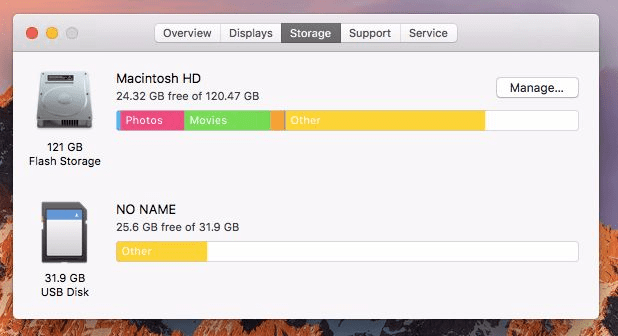- How To Clean Macbook Pro Screen
- How To Clean Other Storage On Macbook Pro
- Clean Up My Macbook Pro
- How To Clean Up Macbook Pro
- How To Clear Storage On Macbook Pro 2015
There are mainly two reasons why you want to restore your Mac to factory settings and erase everything.
Do not use a vacuum and do not let the rotors spin while cleaning! Static electricity buildup or damage to the motors may result. Related info: How to deal with a loud MacBook fan. Here are some noisy fan fixes. How to Clean Out Dust From Your MacBook or iMac Cleaning fans, grille out of MBP. Update your software. The first step to optimizing the inside of your Mac is to update your software. 3 Methods on How to Format MacBook Pro. There are multiple ways to Format Macbook Pro, here are 2 of the easiest methods with all the steps given in detail. Simply follow the step by step guide to clean format your Macbook Pro. Erasing the Drive and Installing OS X. The process of formatting a computer depends on the Operating system it runs on. You can clean up temporary files easier, and much safer, by using CleanMyMac. Just open it up and run through a scan, and then go into the System Junk section to identify all of the cache files and other things that you can clean up. Once you’ve selected what you want or don’t want to clean, just click the Clean button.
You want to erase your MacBook Pro/Air, MacBook, iMac to sell or give away the Mac.
Your Mac is running slow or having other problems so that you want to delete everything on Mac to start over. Skydigital sound cards & media devices driver.
It is not difficult to erase everything on a Mac and reformat the MacBook or iMac. But if you want to reset MacBook Pro/Air, iMac without losing data, or securely and completely wipe a Mac, there are a couple of things you should do. Just follow this guide to complete all the steps that are needed to securely and completely erase everything on Mac. Your Mac will be restored to factory settings after that.
Step 1: Back Up Your Mac Before Factory Reset
I believe that there must be some important files on your Mac. Therefore, it is a must to back up your files before erasing your MacBook or iMac. There are mutiple options to back up your Mac:
Move everything that are important to you to an external hard drive. It is time-consuming but feasible if you have limited documents, photos, videos, etc. that need to be backed up before erasing Mac.
Back up your files on Mac to a cloud storage, such as iCloud. Before doing that, make sure your iCloud account have enough free space.
Make a copy of your Mac data to an external hard drive with a backup program, such as Time Machine, Apple's built-in backup tool for Mac. Learn about the steps to back up a Mac: How to Backup Your Mac with or without Time Machine.
You can wipe a Mac without losing data by using one of the backup methods mentioned above. And to reduce the size of your Mac's backup and incease the backup speed, it is recommended to clean useless junk files on your Mac before a Time Machine or iCloud backup. FonePaw MacMaster can easily delete caches, logs, borwsing history, duplicate files and photos, large files, useless apps and more from your Mac.
Download
How To Clean Macbook Pro Screen
Download and run FonePaw MacMaster on your Mac.
Select the file type you want to clean, such as system junks, duplicate photos. Click Scan.
Click Clean to remove the junks you don't need.
Go ahead to back up your Mac. The backup will be finished more quickly, taking less space of your external hard drive or iCloud account.
Step 2: Completely Delete Private Files
Do you know that files on Mac are actually recoverable after factory reset? That's right. Even though you have reformatted your Mac and erased everything on Mac, it is still possible to recover the erased files on the Mac with a professional data recovery program such as FonePaw Data Recovery. If you have confidential files on your Mac and don't want to take the risk that somebody may find the files from the reformatted Mac after performing data recovery, you can use Eraser on FonePaw MacMasterto securely delete confidential files on your Mac before factory reset. The Eraser can erase the trace of a file on the hard drive and make it unrecoverable.
Install FonePaw MacMaster on your Mac.
Click Eraser and select the files you want to destroy.
Click Erase to make it unrecoverable.
Step 3: Turn off FileVault
FileVault encryption is an Apple built-in feature that is designed to encrypt your hard drive and files on the hard drive. It is recommended to turn off FileVault before reset and clean install macOS system. Here are the stpes to disable FileVault encryption.
Drivers sanwa. Open System Preferences > Security & Privacy.
On the Security & Privacy window, click the FileVault tab.
Click Lock button and you will need to enter password of the administrator account the unlock FileVault settings.
After entering the password, you are able to click Turn Off FileVault. Click it.
All files on your Mac will be dencrypted after FileVault is off.
How To Clean Other Storage On Macbook Pro
Step 4: Remove iTunes Authorization and iCloud Account
You don't want your iTunes or iCloud account to be linking to your MacBook or iMac if you decide to sell it or give it away. You can authorize only 5 computer with your iTunes account so you don't want to lose an allocation to a Mac that you no longer own. So before erasing your MacBook or iMac, you should first deauthorize iTunes and disable iCloud on your Mac.
Sato international pte driver download for windows. Deauthorize iTunes on Mac
Open iTunes on Mac.Click Account > Authorizations > Deauthorize This Computer.
You'll need to enter the password of your Apple ID. Then click Deauthorize.
Sign out of iCloud on Mac
Open System Preference > iCloud. Click Sign Out.A window will pop up, asking whether you want to keep a copy of your iCloud data on the Mac.
Deselect all the options and click Continue, which will ensure that your iCloud data won't stay on the Mac.

Also, don't forget that your iCloud account can also be used to receive iMessage. So run Messages, click Preferences > Accounts to sign out of iMessage.
Step 5: Erase MacBook, MacBook Air/Pro, iMac
After finishing the above steps, you are now offically able to wipe your MacBook, MacBook Pro, MacBook Air or iMac. You need to erase your Mac in recovery mode.
Clean Up My Macbook Pro
Enter your Mac into recovery mode
Power off your Mac and then reboot it. As it is rebooting, press and hold Command + R (Option + Command + R or Shift + Option + Command + R) until you see the Apple logo.
Generally you can use Command + R combination to enter the Recovery mode. If you need to upgrade you need to the latest macOS compatible with your Mac, use Option + Command + R; If you want to clean install the macOS that came with your Mac, use Shift + Option + Command + R.

Erase everything on your Mac
When you are in recovery mode on Mac, you will see the macOS Utilities menu. Select Disk Utility.
Select the disk to erase. To erase everything on your Mac, you usually should choose the main hard drive named Macintosh HD.
If the Mac is running High Sierra or later, Disk Utility will show all the Macs linked with your Apple ID under Macintosh HD. So be careful not to delete the drive of other Macs.

Click Erase. Then you need to enter name and format of the drive. You can choose either APFS or Mac OS Extended (journaled) to reformat the Mac. APFS is a new file system introduced by Apple since High Sierra, which is more recommendable.Click Erase to begin wiping everything on your Mac.
Step 6: Reinstall macOS on MacBook, iMac
After deleting everything on your Mac, you can now reinstall macOS. Go back to macOS Utilities menu. Select Reinstall macOS and follow the on-screen instructions to finish.
That's all about how to factory reset your Mac and erase everthing. If you have more question, drop it in the comment section.
Personal computers are available in virtually every part of the world that has any kind of modern civilization. They are used in commercial and household setting for various purposes to improve the lives of the human race. MacBook Pro is considered one of the leading there are brands in the computer manufacturing industry. In this article, you will be told about the ways to Format MacBook Pro.
Like any other machine, they are subject to breakdowns. Whenever a computer is affected by a stubborn virus, the Operating system isn’t working properly or you have a memory problem, certain ways to format MacBook Pro are usually recommended.
Contents
- 1 3 Methods on How to Format MacBook Pro
3 Methods on How to Format MacBook Pro
There are multiple ways to Format Macbook Pro, here are 2 of the easiest methods with all the steps given in detail.
Simply follow the step by step guide to clean format your Macbook Pro.
How To Clean Up Macbook Pro

1. Erasing the Drive and Installing OS X
The process of formatting a computer depends on the Operating system it runs on. There are many variations of how to format a MacBook Pro. The most secure and easy method involves following these steps:
- The first step is turning on the computer. The computer must be completely off before you attempt to power it on (not the “sleep mode” option).
- Press and hold command, options and R key right after you hear the startup sound. An Apple logo is expected on the screen. This process reveals the formatting and Recovery options.
- Release the Keys when a Window appears asking you about internet options.
- You can select the type of internet connection to use during the process. Select the option on the basis of internet connection that is available. Formatting and reinstalling Mac Operating system requires an internet connection.
- Click on the “Disk utility” option from the Recovery Menu. A new window will appear, on which you select the “Continue” option.
- In the Disk Utility window, click on “Startup Disk” and “Erase” buttons and select the Mac OS Extended (Journaled) version. This drop-down menu allows you to select a custom version of the OS.
- You can then provide the name for the disk and proceed to erase. This performs the formatting and erases the disk.
- Minimize or close the Utility disk and from the recovery menu select “Reinstall OS X”.
- Press continue on the window that appears and you are good to go.
- This method is easy to execute and results in a PC with a current version of the Operating system after formatting is complete.
2. Recovering from a Time Machine Backup
- The first step is turning on the computer. The computer must be completely off before you attempt to power it on (not the “sleep mode” option).
- Press and hold command, options and R keys right after you hear the startup sound. An Apple logo is expected on the screen. This process reveals the formatting and Recovery options.
- Release the Keys when a window appears asking you about internet options.
- You can select the type of internet connection to use during the process. This is dependent on the type of internet connection that is available. Formatting and reinstalling Mac Operating system using Time Machine Backup requires an internet connection.
- Choose “Restore from Time Machine Backup,” and then click on “Continue.”
The method will only work if you had earlier backed up your MacBook system using the application Time Machine. In a case that you have never maintained a backup using this application, Time Machine, then follow the other steps explained in Methods 1 or 3 of the article as methods to format MacBook Pro and reinstalling OS X.
- Pick your Time Machine backup disk, later choose the Time Machine backup you wish to restore. If you wish to format MacBook Pro with the help of this method, this method will reinstall OS X, along with your personal documents. For an instance, when you format MacBook to invert the impacts of a virus, choose a Time Machine backup which was maintained before the installation of the virus on your MacBook system.
- Click on “Continue” to follow the instructions shown on-screen for the reinstallation of OS X along with your personal documents. When it gets completed, your MacBook Pro system will be formatted including the reinstallation of OS X as well as recovery of your personal data.
3. Reinstalling OS X from Recovery
- The first step is turning on the computer. The computer must be completely off before you attempt to power it on (not the “sleep mode” option).
- Press and hold command, options and R keys right after you hear the startup sound. An Apple logo is expected on the screen. This process reveals the formatting and Recovery options.
- Release the Keys when a window appears asking you about internet options.
- You can select the type of internet connection to use during the process. This is dependent on the type of internet connection that is available. Formatting and reinstalling Mac Operating system X requires an internet connection.
- Choose “Reinstall OS X” from the Recovery menu, and then click on “Continue” to proceed.
How To Clear Storage On Macbook Pro 2015
Final Words
Just follow the instructions on the screen of your system to reinstall OS X on MacBook Pro system. Your system will lead you within the installation method, and soon you will be assisted to pick the hard disk where you wish OS X to be installed. Once completed, on your MacBook Pro system OS X would have been installed as fresh and you will get your personal files recovered in no time.
Related Posts:
